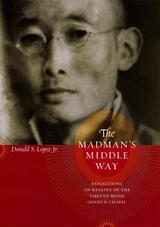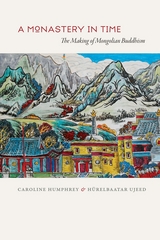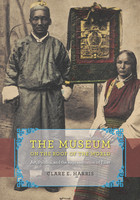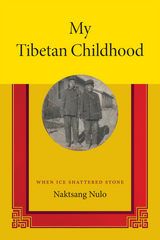133 books about Buddhism and 5
start with M
133 books about Buddhism and 5
133 books about Buddhism
5 start with M start with M
5 start with M start with M

The Madman's Middle Way
Reflections on Reality of the Tibetan Monk Gendun Chopel
Donald S. Lopez Jr.
University of Chicago Press, 2005
Gendun Chopel is considered the most important Tibetan intellectual of the twentieth century. His life spanned the two defining moments in modern Tibetan history: the entry into Lhasa by British troops in 1904 and by Chinese troops in 1951. Recognized as an incarnate lama while he was a child, Gendun Chopel excelled in the traditional monastic curriculum and went on to become expert in fields as diverse as philosophy, history, linguistics, geography, and tantric Buddhism. Near the end of his life, before he was persecuted and imprisoned by the government of the young Dalai Lama, he would dictate the Adornment for Nagarjuna’s Thought, a work on Madhyamaka, or “Middle Way,” philosophy. It sparked controversy immediately upon its publication and continues to do so today.
The Madman’s Middle Way presents the first English translation of this major Tibetan Buddhist work, accompanied by an essay on Gendun Chopel’s life liberally interspersed with passages from his writings. Donald S. Lopez Jr. also provides a commentary that sheds light on the doctrinal context of the Adornment and summarizes its key arguments. Ultimately, Lopez examines the long-standing debate over whether Gendun Chopel in fact is the author of the Adornment; the heated critical response to the work by Tibetan monks of the Dalai Lama’s sect; and what the Adornment tells us about Tibetan Buddhism’s encounter with modernity. The result is an insightful glimpse into a provocative and enigmatic workthatwill be of great interest to anyone seriously interested in Buddhism or Asian religions.
The Madman’s Middle Way presents the first English translation of this major Tibetan Buddhist work, accompanied by an essay on Gendun Chopel’s life liberally interspersed with passages from his writings. Donald S. Lopez Jr. also provides a commentary that sheds light on the doctrinal context of the Adornment and summarizes its key arguments. Ultimately, Lopez examines the long-standing debate over whether Gendun Chopel in fact is the author of the Adornment; the heated critical response to the work by Tibetan monks of the Dalai Lama’s sect; and what the Adornment tells us about Tibetan Buddhism’s encounter with modernity. The result is an insightful glimpse into a provocative and enigmatic workthatwill be of great interest to anyone seriously interested in Buddhism or Asian religions.
[more]

A Monastery in Time
The Making of Mongolian Buddhism
Caroline Humphrey and Hurelbaatar Ujeed
University of Chicago Press, 2013
A Monastery in Time is the first book to describe the life of a Mongolian Buddhist monastery—the Mergen Monastery in Inner Mongolia—from inside its walls. From the Qing occupation of the eighteenth and nineteenth centuries through the Cultural Revolution, Caroline Humphrey and Hürelbaatar Ujeed tell a story of religious formation, suppression, and survival over a history that spans three centuries.
Often overlooked in Buddhist studies, Mongolian Buddhism is an impressively self-sustaining tradition whose founding lama, the Third Mergen Gegen, transformed Tibetan Buddhism into an authentic counterpart using the Mongolian language. Drawing on fifteen years of fieldwork, Humphrey and Ujeed show how lamas have struggled to keep Mergen Gegen’s vision alive through tremendous political upheaval, and how such upheaval has inextricably fastened politics to religion for many of today’s practicing monks. Exploring the various ways Mongolian Buddhists have attempted to link the past, present, and future, Humphrey and Ujeed offer a compelling study of the interplay between the individual and the state, tradition and history.
[more]

The Museum on the Roof of the World
Art, Politics, and the Representation of Tibet
Clare E. Harris
University of Chicago Press, 2012
For millions of people around the world, Tibet is a domain of undisturbed tradition, the Dalai Lama a spiritual guide. By contrast, the Tibet Museum opened in Lhasa by the Chinese in 1999 was designed to reclassify Tibetan objects as cultural relics and the Dalai Lama as obsolete. Suggesting that both these views are suspect, Clare E. Harris argues in The Museum on the Roof of the World that for the past one hundred and fifty years, British and Chinese collectors and curators have tried to convert Tibet itself into a museum, an image some Tibetans have begun to contest. This book is a powerful account of the museums created by, for, or on behalf of Tibetans and the nationalist agendas that have played out in them.
Harris begins with the British public’s first encounter with Tibetan culture in 1854. She then examines the role of imperial collectors and photographers in representations of the region and visits competing museums of Tibet in India and Lhasa. Drawing on fieldwork in Tibetan communities, she also documents the activities of contemporary Tibetan artists as they try to displace the utopian visions of their country prevalent in the West, as well as the negative assessments of their heritage common in China. Illustrated with many previously unpublished images, this book addresses the pressing question of who has the right to represent Tibet in museums and beyond.
[more]

My Tibetan Childhood
When Ice Shattered Stone
Natksang Nulo
Duke University Press, 2014
In My Tibetan Chldhood, Naktsang Nulo recalls his life in Tibet's Amdo region during the 1950s. From the perspective of himself at age ten, he describes his upbringing as a nomad on Tibet's eastern plateau. He depicts pilgrimages to monasteries, including a 1500-mile horseback expedition his family made to and from Lhasa. A year or so later, they attempted that same journey as they fled from advancing Chinese troops. Naktsang's father joined and was killed in the little-known 1958 Amdo rebellion against the Chinese People’s Liberation Army, the armed branch of the Chinese Communist Party. During the next year, the author and his brother were imprisoned in a camp where, after the onset of famine, very few children survived.
The real significance of this episodic narrative is the way it shows, through the eyes of a child, the suppressed histories of China's invasion of Tibet. The author's matter-of-fact accounts cast the atrocities that he relays in stark relief. Remarkably, Naktsang lived to tell his tale. His book was published in 2007 in China, where it was a bestseller before the Chinese government banned it in 2010. It is the most reprinted modern Tibetan literary work. This translation makes a fascinating if painful period of modern Tibetan history accessible in English.
The real significance of this episodic narrative is the way it shows, through the eyes of a child, the suppressed histories of China's invasion of Tibet. The author's matter-of-fact accounts cast the atrocities that he relays in stark relief. Remarkably, Naktsang lived to tell his tale. His book was published in 2007 in China, where it was a bestseller before the Chinese government banned it in 2010. It is the most reprinted modern Tibetan literary work. This translation makes a fascinating if painful period of modern Tibetan history accessible in English.
[more]

Myoe the Dreamkeeper
Fantasy and Knowledge in Early Kamakura Buddhism
George Tanabe
Harvard University Press, 1992
READERS
Browse our collection.
PUBLISHERS
See BiblioVault's publisher services.
STUDENT SERVICES
Files for college accessibility offices.
UChicago Accessibility Resources
home | accessibility | search | about | contact us
BiblioVault ® 2001 - 2024
The University of Chicago Press









